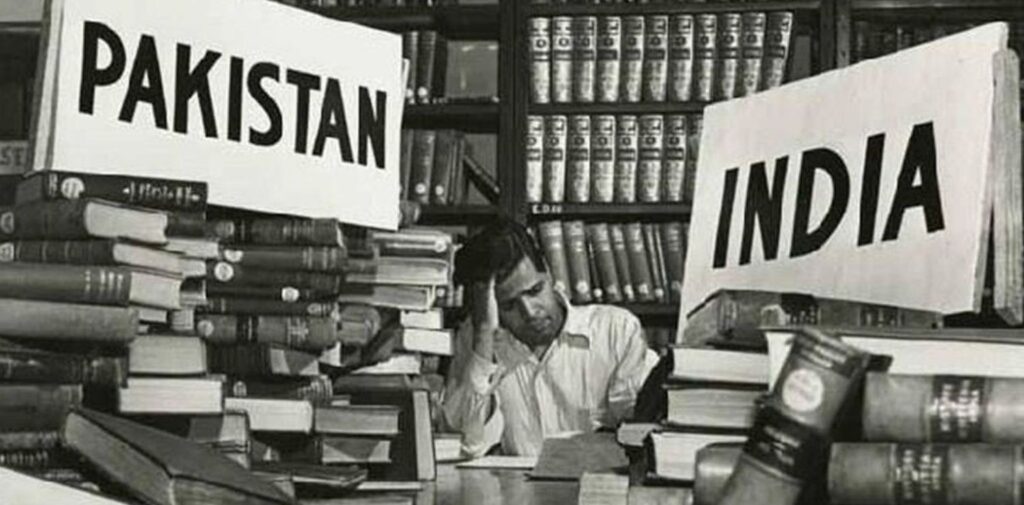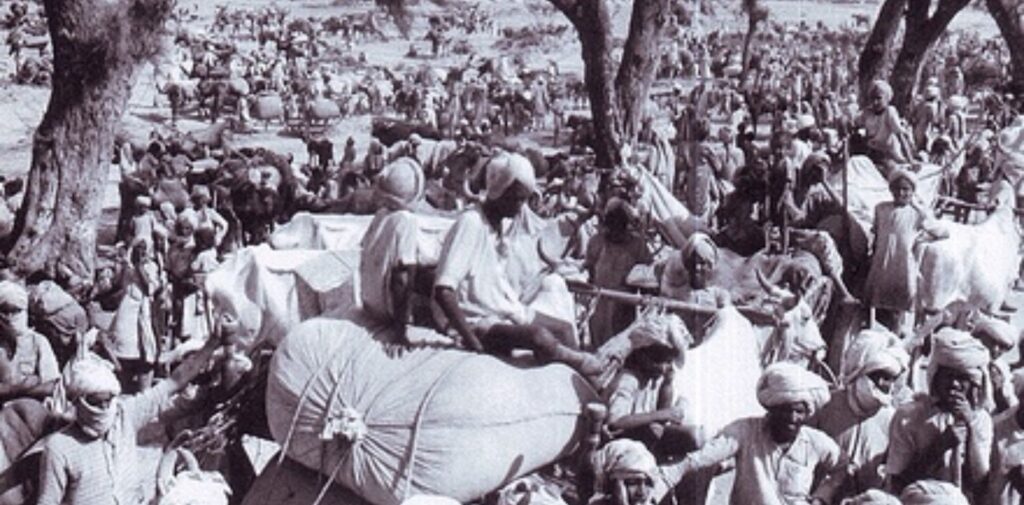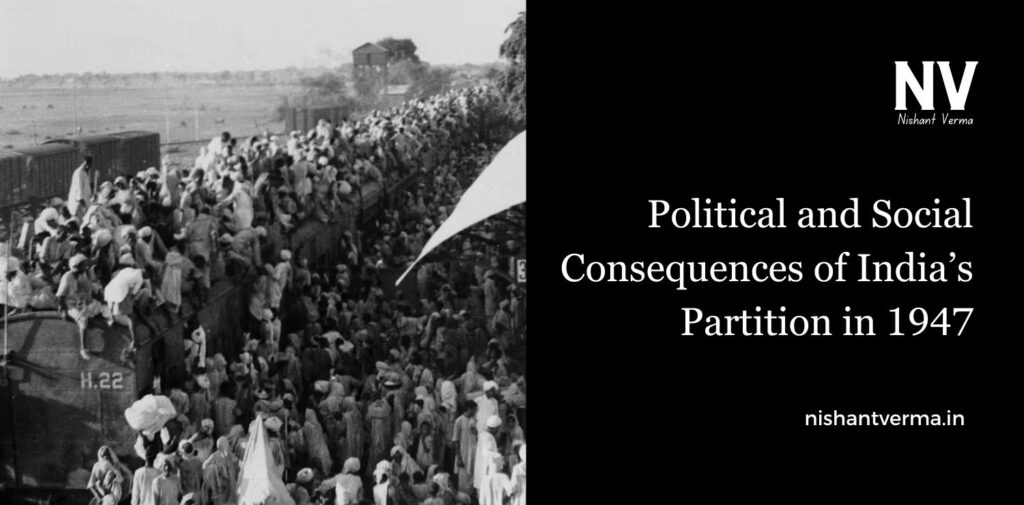In 1947, India gained independence from British rule. However, this independence came at a high price—the partition of India into two countries: India and Pakistan. This division created a lot of political and social problems that affected millions of people. In this article, we will explore the consequences of India’s partition in simple terms.
What Was the Partition of India?
Before 1947, India was under British rule for nearly 200 years. Many Indians fought for independence under leaders like Mahatma Gandhi and Jawaharlal Nehru. However, there was a big difference of opinion on how the new India should be formed. The Indian National Congress, led by Nehru, wanted a united India where Hindus and Muslims could live together. But, the All-India Muslim League, led by Muhammad Ali Jinnah, demanded a separate country for Muslims. This led to the creation of two countries: India and Pakistan.
Pakistan was created as a separate country for Muslims, while India was for Hindus and other communities. The division was done on the basis of religion. India became a majority Hindu country, while Pakistan became a majority Muslim country. This division is what we call the “partition.”

Political Consequences of the Partition
1. Creation of Two Separate Nations
The most significant political result of the partition was the creation of two countries: India and Pakistan. India became an independent nation with its own government, while Pakistan also became independent but with its own government. The two countries now had different rulers, leaders, and political systems.
2. Rise of Conflicts Between India and Pakistan
Once the two countries were formed, there were immediate conflicts. The biggest issue was the Kashmir region. Both India and Pakistan wanted control over Kashmir, leading to wars in 1947 and 1965. The disagreement over Kashmir continues even today. This has caused a lot of tension between the two countries.
3. The Impact on Governance
For India, the partition meant that the new government had to handle millions of refugees who were displaced from their homes. The government also had to manage a large, diverse population with different religions, languages, and cultures. Similarly, Pakistan had to set up its government and deal with the large influx of Muslims coming from India.

Social Consequences of the Partition
1. Huge Migration and Refugees
One of the biggest social effects of partition was the mass migration of people. Millions of Hindus and Sikhs living in Pakistan moved to India, and millions of Muslims from India moved to Pakistan. Families were torn apart, and people were forced to leave their homes, often with little to no belongings. This migration caused immense suffering and hardship.
2. Violence and Bloodshed
The partition led to large-scale violence. People from different religious communities, especially Hindus, Sikhs, and Muslims, turned against each other. The partition saw horrific events where people were killed, women were raped, and families were separated. The violence claimed the lives of hundreds of thousands of people. The atmosphere was filled with fear, anger, and hatred.
3. Loss of Property and Homes
Many people who had lived in the same place for generations were forced to leave their homes. They lost their property, businesses, and wealth. The trauma of leaving everything behind was hard to overcome. The refugees faced poverty, hunger, and discrimination in the new lands they moved to.
4. The Impact on Families
Families were separated due to the partition. Some family members found themselves in India, while others were left in Pakistan. Many people were never able to see their loved ones again. The emotional pain and trauma lasted for generations, and people still remember the stories of those who went through the partition.
The Economic Impact of Partition
The partition also had a major economic impact on both India and Pakistan. During the split, resources such as food, money, and land were divided between the two countries. This left both countries struggling with economic problems.
1. Division of Resources
When India and Pakistan were divided, they also had to share important resources like water, land, and industries. For example, the Indus River system, which flows through both countries, became a source of conflict as both sides wanted control of the water. The economic effects of this sharing are still seen today.
2. Economic Disruption
The movement of people caused businesses and farms to collapse. Many people who had businesses in one country now had to start over in a new land, which was not easy. This led to economic disruptions, especially in the areas affected by violence and migration.

Long-Term Effects of the Partition
1. Lasting Tensions Between India and Pakistan
The partition sowed the seeds of ongoing hostility between India and Pakistan. Even though both countries became independent, the bitter memories of partition continue to affect their relationship. The wars over Kashmir, the building of nuclear weapons, and the rivalry in various areas of life still cause tensions.
2. Divisions Within Society
The partition created divisions within Indian and Pakistani societies. The religious divide led to social issues in both countries. In India, there were tensions between Hindus, Muslims, Sikhs, and other communities. In Pakistan, the lack of unity between various Muslim groups has also caused problems. Even today, these divisions can still be seen in the form of religious intolerance and discrimination.
3. Cultural Changes
In both India and Pakistan, the partition caused changes in culture. Many people who moved to new countries had to adapt to a different way of life. The migration also led to the mixing of cultures in certain areas, but it also led to the loss of some cultural traditions as people were forced to leave their homes.
Conclusion: A Divided Past, but a Hopeful Future
The partition of India in 1947 was a painful event in history. It caused immense suffering for millions of people and led to the creation of two countries, India and Pakistan. While the political and social consequences of the partition are still felt today, there is hope for a better future. People in both countries have learned the importance of peace, unity, and understanding.
India and Pakistan may be two separate countries, but they share a common history and culture. It is important to remember the lessons of the past and work towards building a world where differences are respected, and people can live in peace. Though the scars of partition may never fully heal, the future holds the possibility of better relations between the two nations, where everyone, regardless of religion, caste, or nationality, can live together in harmony.
The partition of India was a defining moment in the country’s history. It caused great pain and division, but it also taught the world important lessons about unity, peace, and understanding. Today, both India and Pakistan continue to grow, learning from the past and looking forward to a future where peace prevails.




